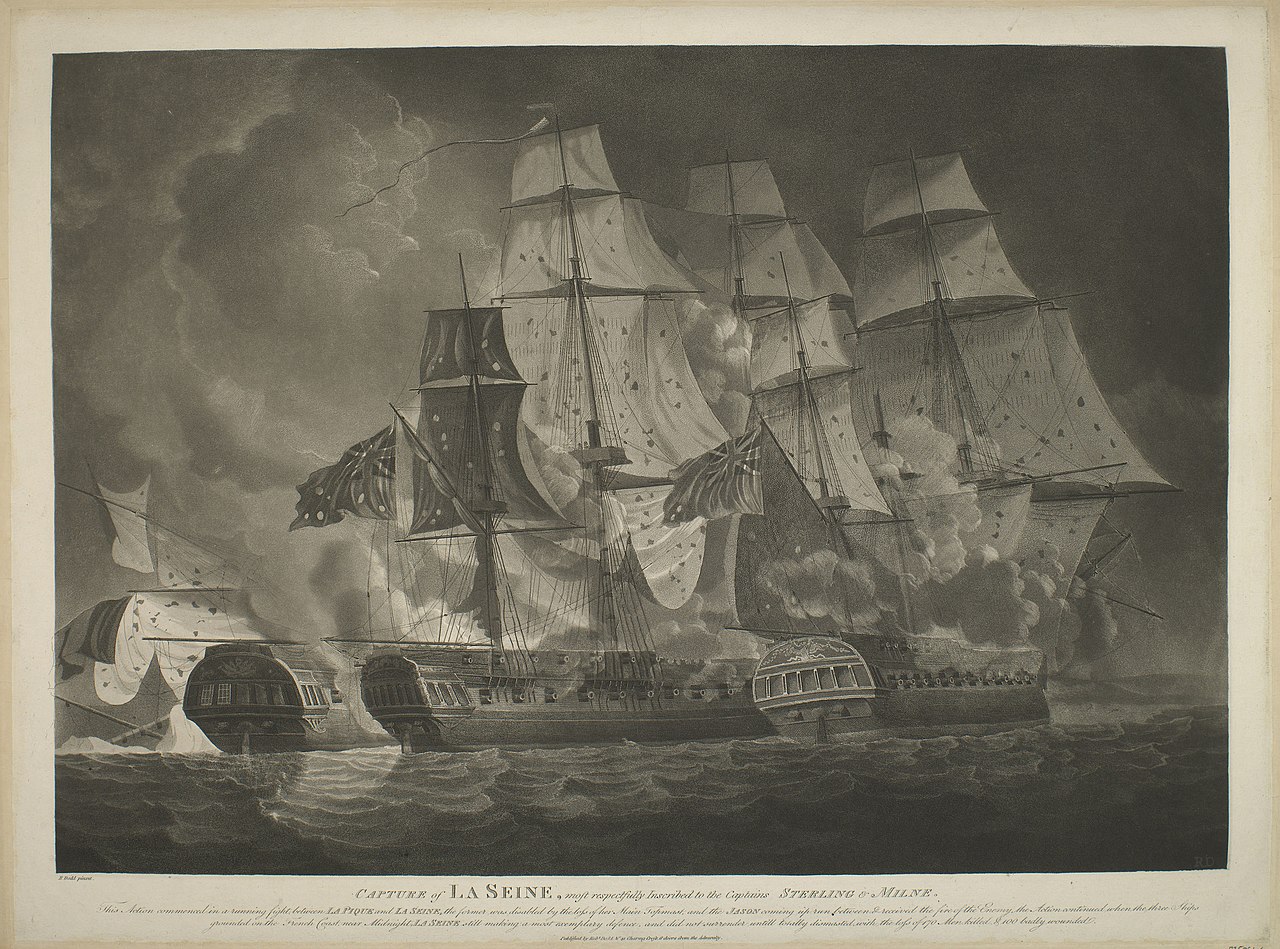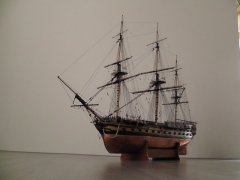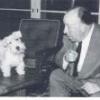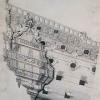-
Posts
2,245 -
Joined
-
Last visited
Reputation Activity
-
 Beef Wellington reacted to JesseLee in Syren by JesseLee - FINISHED - Model Shipways - scale: 1:64
Beef Wellington reacted to JesseLee in Syren by JesseLee - FINISHED - Model Shipways - scale: 1:64
I'm looking at areas that i know I will have trouble reaching into later when masts, rigging, etc. are in place. Looking at Dirks build I went on and did the anchor ropes on deck now. I found this a little difficult to do.Making sure everything attached at just the right place wasn't that easy for me.
For ropes that need serving I'm using a homemade machine. I was talking to a friend of mine about wanting to get Chuck's. He wanted something to do so he went and made this. Not really what i wanted but it works. For someone who doesn't really understand serving or anything in miniature he actually did pretty good. It is a little rickety but it will do for now until I get a better one.
Jesse
-
 Beef Wellington reacted to JesseLee in Syren by JesseLee - FINISHED - Model Shipways - scale: 1:64
Beef Wellington reacted to JesseLee in Syren by JesseLee - FINISHED - Model Shipways - scale: 1:64
Noticed that I hadn't done the rudder chains. Started to do it like the instructions say but after reading what Dubz says about this I did it the way he did.
Jesse
-
 Beef Wellington reacted to Gaetan Bordeleau in 74-gun ship by Gaetan Bordeleau - 1:24
Beef Wellington reacted to Gaetan Bordeleau in 74-gun ship by Gaetan Bordeleau - 1:24
Another photographic test: Taking pictures with an Ikea $20 LED lamp.
On the second deck, there will be 10 windows aft. 6 windows are inside the limit of the frames and the other 4 will be added later. Looking at the plan it is difficult to set the width of the windows, so I looked at it a different way to set the position of 8 vertical beams.
3 beams are installed : 1 on each wall and the middle one. Then, each half was divided in 3 spaces between beams.
In a global way, these are the only measures needed to set the vertical beams.
The width for the gun opening is derived from the setting of 2 upper beams.
-
 Beef Wellington reacted to Vegaskip in Ship paintings
Beef Wellington reacted to Vegaskip in Ship paintings
British Naval Aviation in WW1
Short 320 Seaplane takes off from the river Forth off Rosyth.SSZ 57 is a Costal airship stationed at Longside in Angus. HMS Pegasus at at anchor
jim
-
 Beef Wellington reacted to BANYAN in HMCSS Victoria 1855 by BANYAN - 1:72
Beef Wellington reacted to BANYAN in HMCSS Victoria 1855 by BANYAN - 1:72
Another small conundrum to resolve before I finalise the rigmaiden lanyards (see last image - From The Mechanics Magazine - out of copyright).
Whereas in most earlier sailing ships using deadeyes and rope lanyards, the chainplates conform/align with the angle of the shroud the associated plate attaches to at the channel. From what I can see in the following photo (one marked up, the other as is for verification of detail) and the two lithograph details (curtesy of the State Library of Victoria), it appears that the chainplates on Victoria were simply at right angles to the channel and hull when looking straight a them (still bent to get the right angles to approach the hull when looking fore-and-aft).
cheers
Pat
-
 Beef Wellington reacted to BANYAN in HMCSS Victoria 1855 by BANYAN - 1:72
Beef Wellington reacted to BANYAN in HMCSS Victoria 1855 by BANYAN - 1:72
Hi folks,
Work to progress all the parts that need to prepositioned or prepared prior to painting continues. I have been working on:
the common Service Lifebuoy for the stern, started on the rigmaiden lanyards (these are used in lieu of the rope lanyards and deadeyes), refined the anchor release mechanism parts, the stern bench, the cable stoppers are finished, and I have fitted the heads (lids still to be fitted) - these align with the discharge pipes in the earlier photo to which a canvas hose was fitted to keep the sides clean. The Common Service Lifebuoy had two vertical rails on the stern which, when released, the buoy would slide down; at the same time smoke/flare in the top part would also be ignited by a gunlock. The weight at the bottom would pull down a rod telescoped into the vertical tube which would act as a keel for the two 16 inch (real life) copper balls and keep the flare/smoke vertical to the water. The buoy hung from the stern on the vertical rails by a small chain (just visible in the photo). I now have to predrill the four holes for the rods before painting. One standoff rod is slightly bent at the moment but easily fixed.
Most of these parts are very small with the camera being very close it shows all the tiny imperfections just not visible normally - that is an inch ruler in the photos.
I will be able to start painting very soon I hope.
cheers
Pat
-
 Beef Wellington reacted to Vegaskip in Ship paintings
Beef Wellington reacted to Vegaskip in Ship paintings
Meanwhile, back at the Ranch.
HMS Belfast launches her Walrus
W/C 23" X 16"
-
 Beef Wellington reacted to matiz in French 74-gun ship by matiz - scale 1:56 - Tiziano Mainardi
Beef Wellington reacted to matiz in French 74-gun ship by matiz - scale 1:56 - Tiziano Mainardi
Hi, another pictures
-
 Beef Wellington reacted to Vegaskip in Ship paintings
Beef Wellington reacted to Vegaskip in Ship paintings
Clan Macintosh(3)
How to avoid painting Sea and Sky, a quick wash of light blue.
W/C 15 X 10 inches
Jim
-
 Beef Wellington got a reaction from Sjors in HMS Jason by Beef Wellington - Caldercraft - 1:64 - Artois-class frigate modified from HMS Diana 1794
Beef Wellington got a reaction from Sjors in HMS Jason by Beef Wellington - Caldercraft - 1:64 - Artois-class frigate modified from HMS Diana 1794
Thanks everyone for the very kind words and continued interest...not really much to report with only some ad-hoc shipyard activity, but a cautionary tale whilst its still fresh. Started to make up the gun carriages, all 28 of them :-( The axles took quite a bit of time to shape appropriately which I did with a file to rough shape and then turned in the lathe to fine tune. Cautious going is the name of the game, and of course some turned out not at well as I'd hoped but these should be able to be "hidden at the back".
The issue I encountered was that I didn't think to check the thickness of the Syren sheets the parts come from and assumed these would all be consistent. The prototype I had already built all seemed to go together nicely and to make life a little easier I built a simple jig to make alignment easier. By chance, I then noticed that there are some reasonably significant differences in dimension. If you look at the second picture where I stack those that look thicker against those that appear thinner the difference is apparent (both 11 in number). What this means is that to build the carriages to the same dimensions will need some parts to be custom made from spare stock as the laser cut part is too small. It appears by chance that the prototype was built using the 'thicker' variety.
-
 Beef Wellington reacted to flyer in HMS Vanguard by RMC - FINISHED - Amati/Victory Models - scale 1:72
Beef Wellington reacted to flyer in HMS Vanguard by RMC - FINISHED - Amati/Victory Models - scale 1:72
Congratulations Bob! A beautiful ship and very clean, precise work.
Cheers
Peter
-
 Beef Wellington reacted to Davemc in HMS Snake by Davemc - FINISHED - Caldercraft - 1/64
Beef Wellington reacted to Davemc in HMS Snake by Davemc - FINISHED - Caldercraft - 1/64
Back after a long break!
Partly enforced due to eye ops, but also made a mess of the deck planking so decided to start again from scratch.
Deck planking and copper on the hull completed.
-
 Beef Wellington reacted to rafine in Halifax by rafine - FINISHED - The Lumberyard - 1:48 - semi-scratch schooner
Beef Wellington reacted to rafine in Halifax by rafine - FINISHED - The Lumberyard - 1:48 - semi-scratch schooner
I'm almost to the end of work on the deck. I've now mounted and rigged the remaining four guns, added the cross piece to the fore bitts and permanently mounted the previously made stack for the galley stove. I also threaded the anchor cables through the hawse holes and up through the openings on the forecastle deck (a ticklish job that probably should have been done earlier).
All that remains to be done is the windlass and probably a few cleats for rigging attachment. I'm still working out how to go about doing the windlass.
Bob
-
 Beef Wellington reacted to RMC in HMS Vanguard by RMC - FINISHED - Amati/Victory Models - scale 1:72
Beef Wellington reacted to RMC in HMS Vanguard by RMC - FINISHED - Amati/Victory Models - scale 1:72
Well it's finally finished. Both sets of anchors are now on (this was a really rotten job), and the rudder is on, chains and all. Joy - and the whole thing only took about five years.
The rudder and chains may be easily removed to transport the model to wherever it ends up. At the moment I have no idea where.
Here it is in all its glory.... There is no ensign. I decided that the double-layer ensign earlier hoisted on it was too heavy, making it foul some of the rigging. I will buy a couple of single layer becc ensigns to see how they go, If I'm unhappy with them the ship shall remain ensignless.
Here are the two port anchors.
The rudder -
Just a note on the Granado gun carriages. I received the Syren carriages a couple of days ago. They are very good quality indeed, but unfortunately just too large. I will have to go with the Caldercraft carriages. I made a couple up over the weekend and they turned out reasonably well, though the ply shows. A couple of extras were supplied so I will experiment to see if I can improve the result.
I will post a couple of pictures when I get around to it, but aside from this, this is the last post.
-
 Beef Wellington reacted to Mirabell61 in Eagle of Algier 1753 by Mirabell61 - FINISHED - 1:48 - Chebec - Nils Langemann
Beef Wellington reacted to Mirabell61 in Eagle of Algier 1753 by Mirabell61 - FINISHED - 1:48 - Chebec - Nils Langemann
Update :
Made the stove for cooking on deck, but moved it under the sheltered deck, it will get a chimney through the deck above later on.
Also for the doubts of those finding the rudder possibly a bit slim, I increased the width by 1,5 mm....
Nils
-
 Beef Wellington reacted to DaveRow in HMB Endeavour by DaveRow - FINISHED - Corel - Scale 1:60 - First Build Kit
Beef Wellington reacted to DaveRow in HMB Endeavour by DaveRow - FINISHED - Corel - Scale 1:60 - First Build Kit
Shipyard Update:
Ratlings:
Finished the Port Mizzen Ratline.
A few pictures along the way below.
Below is my Magnifier which has been used for every knot for the ratlins.
Both Mizzen sides completed.
-
 Beef Wellington reacted to Hennie in Sovereign of the Seas by Hennie - Sergal - 1:78
Beef Wellington reacted to Hennie in Sovereign of the Seas by Hennie - Sergal - 1:78
Hi all!
I am halfway second planking. Till now it looks ok to mee
-
 Beef Wellington got a reaction from Martin W in 18th Century English Longboat by Blue Ensign - FINISHED - Model Shipways - 1:48 Scale
Beef Wellington got a reaction from Martin W in 18th Century English Longboat by Blue Ensign - FINISHED - Model Shipways - 1:48 Scale
Beautiful results as to be expected, really nice to see the side by side comparison.
-
 Beef Wellington got a reaction from Blue Ensign in 18th Century English Longboat by Blue Ensign - FINISHED - Model Shipways - 1:48 Scale
Beef Wellington got a reaction from Blue Ensign in 18th Century English Longboat by Blue Ensign - FINISHED - Model Shipways - 1:48 Scale
Beautiful results as to be expected, really nice to see the side by side comparison.
-
 Beef Wellington got a reaction from mtaylor in Soleil Royal by Hubac's Historian - Heller - An Extensive Modification and Partial Scratch-Build
Beef Wellington got a reaction from mtaylor in Soleil Royal by Hubac's Historian - Heller - An Extensive Modification and Partial Scratch-Build
Hi, know very little about the subject matter so have been following but not commenting. Good to see things have worked out as well as they have, well done! You were certainly brave to tackle the bow the way that you did. Now that I've seen what you had been intending, I wonder gluing the grey hawse hole pieces into the 'extended bow' position initially would have made the alignment of the bow extension pieces to be a little easier? - of course theses would need a filling piece at rear in that case.
-
 Beef Wellington got a reaction from EJ_L in Soleil Royal by Hubac's Historian - Heller - An Extensive Modification and Partial Scratch-Build
Beef Wellington got a reaction from EJ_L in Soleil Royal by Hubac's Historian - Heller - An Extensive Modification and Partial Scratch-Build
Hi, know very little about the subject matter so have been following but not commenting. Good to see things have worked out as well as they have, well done! You were certainly brave to tackle the bow the way that you did. Now that I've seen what you had been intending, I wonder gluing the grey hawse hole pieces into the 'extended bow' position initially would have made the alignment of the bow extension pieces to be a little easier? - of course theses would need a filling piece at rear in that case.
-
 Beef Wellington got a reaction from Hubac's Historian in Soleil Royal by Hubac's Historian - Heller - An Extensive Modification and Partial Scratch-Build
Beef Wellington got a reaction from Hubac's Historian in Soleil Royal by Hubac's Historian - Heller - An Extensive Modification and Partial Scratch-Build
Hi, know very little about the subject matter so have been following but not commenting. Good to see things have worked out as well as they have, well done! You were certainly brave to tackle the bow the way that you did. Now that I've seen what you had been intending, I wonder gluing the grey hawse hole pieces into the 'extended bow' position initially would have made the alignment of the bow extension pieces to be a little easier? - of course theses would need a filling piece at rear in that case.
-
 Beef Wellington reacted to Erebus and Terror in HMS Terror by Erebus and Terror - FINISHED - Scale 1:48 - POB - as fitted for polar service in 1845
Beef Wellington reacted to Erebus and Terror in HMS Terror by Erebus and Terror - FINISHED - Scale 1:48 - POB - as fitted for polar service in 1845
THE GREAT PLANKING OF 2017 (Part 1)
Special attention was paid to HMS Terror’s planking; originally, to protect her from the recoil of her massive mortars within, and later to protect her from the immense force of polar ice without. These combined pressures resulted in the construction of perhaps the toughest wooden sailing vessel the world has ever seen. She was, in her way, the pinnacle of the wooden shipwright’s art - embodied in a squat, slab-sided bomb, with the lines and dull sailing qualities of a merchantman. How can you not love HMS Terror?
My reconstruction of Terror's 1845 planking plan.
Please visit my blog for the complete description of Terror's planking desgn and history.
I made two fundamental mistakes when planning to plank Terror’s hull in 2013. The first of these was deciding to double-plank her hull, just like the real ship. I began planking my model in the fall of 2016. In a previous post, I showed how I planked Terror’s topside weatherworks above the chocks. I followed a similar methodology for the hull, but rather than edge-bending planks, I had to carefully spile them, as this was necessary to plank the bluffer parts of Terror’s bow.
The first strake added to the hull. The white line was my first inadequate
attempt to line off the bottom of the wales. I fixed the run shortly after this picture was taken.
The first strake at the bow. This image reveals how bluff Terror was just above the waterline.
Again, this was taken before I adjusted the reference line on the hull.
Spiling greatly slowed my progress, and I was only able to complete one or two strakes in an evening. With 120 strakes necessary for both layers of hull planking, not including the ice chocks, stern, and upper deck, I rapidly realized that I was facing a crisis. The deadline to deliver my model for the Death in the Ice exhibition was in June of 2017, and it quickly became apparent that I would not make that deadline if I did not increase my output. Thus, I began the great planking of 2017.
It began with a compromise. To speed up the first layer of planking, I decided to double the width of each of the lower hull strakes and to not follow the accurate plank shift pattern (which requires more cutting). While this layer will never be visible, I regret not having completed it to scale; in addition, not having a photograph of Terror’s original planking configuration remains a sincere source of dissatisfaction for me.
My second mistake was to plank the second layer of my model using accurate scale plank thicknesses. Some of the planks on Terror’s wales are 8 inches thick, representing a daunting task at 1:48th scale. While the three and four-inch scale planks could easily be bent with a crimping tool and some heat from a blow dryer, this technique simply would not work on planks thicker than five scale inches. Every thick plank had to be soaked in near-boiling water for 20 minutes, carefully crimped with a plank bender, and then pressed into shape using a bending iron and a curved jig. On top of that, each plank had to be carefully spiled before bending, and the distortion caused by swelling wood and heat treatment caused no end of difficulty. An added complication was that the thickest strakes, at the wales, had to be laid top and butt fashion, which further complicated the spiling process.
The second layer of planking in progress. You can see here where I made the decision to
widen each strake on the first layer (about January 2017).
Detail showing the transition to 8" strakes at wales. The upper two 8" stakes were sanded
to provide a smooth run to the 6" planks above them.
The third strake of 8" top and butt planking at the bow. Notice the
drop strake below it in the first layer of planking.
Top and butt planking in progress. The tape protects
the wood at the stern and bow during planking.
Detail of the completed top and butt planking.
Adding the absurdly wide garboard strake on the second layer.
Close up of the garboard strake at midships. According to contemporary plans,
the garboard strake of the second layer was not rabbeted into the keel.
Interestingly, it was on later polar vessels, like HMS Investigator.
The final garboard planks at the stern, after bending them into shape.
Bottom planking in progress. This photo shows how I lined off the second layer of planking.
The most difficult part of the hull planking occurred with the stern. The first layer of planking was relatively simple as it abutted the rabbet on the original stern post (hence this layer was planked like every other ship). However, Lang’s 1845 conversion of Erebus and Terror to steam locomotion required that the second layer of planking form the walls of the propeller well. This meant that the second layer extended over the original stern post and propeller well and was rabbeted into the new rudder post. I’ve known for some time what shape this configuration would take, but implementing it required a lot of trial and error, despite Lang’s detailed plans and a block model for guidance. The most difficult chore was bending and spilling the planks into the proper shape, especially the strake forming the lower margin of the well. It also required the use of two “stealers” to accommodate the increased area of the stern. However, once installed, I’m convinced the model respects Lang’s design, the 1845 block model, and the practical reality faced by the shipwrights who had to plank this unusual ship.
I use masking tape to make spiling templates. This shows the extreme shape of the
first stern plank above the propeller opening at the stern. Lang didn't make the
shipwright's task easy!
The resulting pearwood plank.
To achieve the complex bend in the plank, I soaked it in hot
water, then clamped it in place until it dried.
One of the stealer planks in the stern, after it had been bent to shape.
Terror's unusual stern, prior to sanding and finish. Oliver Lang designed only one stealer
in this area , but I found it impossible to plank without a second. I'll discuss the
planking of the transom and chock channel in Part 2.
The completed second layer at the bow prior to sanding and finish. Note the drop planks below the wales.
On the finished model this is completely covered by a third layer of wood and "iron" plating.
I didn't need to spend such care at the bow, but a modeler can only accept so much
compromise. I'll discuss the planking of the chock channel "ice bumper" in Part 2.
The completed planking prior to sanding, bow plating, and finish. I'll discuss the planking of the chock
channel "ice bumper" in Part 2 .
Part 2 of my post details the planking of Terror’s chock channels (or “ice bumper”), her transom, and her upper deck. Stay tuned!
-
 Beef Wellington reacted to toms10 in HMS Leopard by toms10 - FINISHED - 1:85 scale POF/POB
Beef Wellington reacted to toms10 in HMS Leopard by toms10 - FINISHED - 1:85 scale POF/POB
It has been a while since I posted but I have been making some progress on the stern windows. Below are some pics. I am currently trying to make the tiny spindles for the overhang below the top set of rear windows. I don't know what that is called. At 1:85 scale they need to be about 2mm in diameter with undercuts down to 1.5. Not exactly an easy task when you have to make about 75 of them that need to look the same since they will be right next to each other. Luckily I have access to a lathe and tool room to make tool bits and such. Problem is keeping the wood from splintering apart at such a small dia. I have tried various wood and am actually having success using toothpicks. I plan on painting them either white or gold so the wood color is not really important. The sculptures will be a gold color once I figure out how to make them. I will probably use some type of clay, maybe Sculpey since that is more forgiving than wood. It will be my first attempt at sculpting/carving so I am pretty scared. So to delay the terror I decided to work on the hook and scarf planking on the wales. I did a small section next to the cutout and other than needing a bit of paint touch up in the joints I am happy with the way they came out. I am going to finish the wales now just to keep the "good feeling" going.
Tom
-
 Beef Wellington reacted to Vegaskip in Ship paintings
Beef Wellington reacted to Vegaskip in Ship paintings
Thanks Nils. This is called Cruisers Cruising. L to R Dido class, Town class and Colony class cruisers.
I like this one. Nothing fancy and the ships are pretty accurate Reminds me of calm days in the Mediterainian.
Jim








